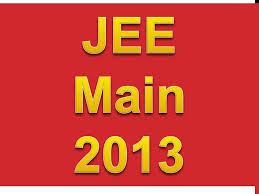JEE Mains Results Declared

Jee Mains 2014 examination topper is a student from Andhra Pradesh. Pramod Vakacharla from Sulurapeta in Nellore district scored 355 out of 360 to bag the top spot, a tad higher than the first ranker of last year, again an Andhra student, M Viswa Virinchi who scored 345.
Two people share the second position this year with 350 score, Krishlay Raj from Jharkhand and Mohammad Akram Khan from Andhra Pradesh again. Both the Andhra students, Vakacharla and Khan bagged nearly the same score in their intermediate examination and are aspiring to enroll in computer science engineering at IIT Bombay. Out of the 1.54 lakh candidates who made it the next phase and were declared qualified to take JEE (Advanced), 28,666 of them were girls. JEE (Advanced) is scheduled for May 25 and the registration has already started. The cut-off for the entrance test to the Indian Institutes of Technology is two spots higher this year, at 115 for general category candidates compared to 113 last year. For OBC candidates, it stands at 74, compared to 70 in 2013, at 53 for scheduled caste students and 47 for scheduled tribe candidates. Scores were relaxed by 38.5 per cent for OBC candidates and by 60.18 per cent for scheduled tribes. The CBSE withheld 16 results as the candidates were caught cheating.
JEE Board said in an official notification that they will follow the government of India directive for distribution across categories. OBC-NCL: 27 per cent, SC: 15 per cent, ST: 7.5 per cent and the rest 50.5 per cent will be from the Common Merit List that includes all category candidates. A total of 13.57 lakh students registered for JEE (Main) this year across the country. Nearly 15,500 seats are on offer in 30 NITs, 850 seats in five IIITs and another 15,000 seats in self-financing institutions. The rank scored in the JEE (Main) is valid for two years. It means a candidate who figures in the top 1.5 lakh list of JEE (Main) can take the JEE (Advanced) either this year or next year. Last year, to figure in the top-20 percentile list, the cut-off was the highest for Andhra Pradesh- 91.8 per cent, followed by Tamil Nadu at 90.9 per cent and Kerala at 85.2 per cent.
Candidates who have not made to JEE (Advanced) can still follow their engineering dreams at NITs or self-financing colleges. CBSE will publish a national merit list and state-specific merit lists for the candidates who have a positive score at JEE (Mains) 2014.

Jee Mains 2014 examination topper is a student from Andhra Pradesh. Pramod Vakacharla from Sulurapeta in Nellore district scored 355 out of 360 to bag the top spot, a tad higher than the first ranker of last year, again an Andhra student, M Viswa Virinchi who scored 345.
Two people share the second position this year with 350 score, Krishlay Raj from Jharkhand and Mohammad Akram Khan from Andhra Pradesh again. Both the Andhra students, Vakacharla and Khan bagged nearly the same score in their intermediate examination and are aspiring to enroll in computer science engineering at IIT Bombay. Out of the 1.54 lakh candidates who made it the next phase and were declared qualified to take JEE (Advanced), 28,666 of them were girls. JEE (Advanced) is scheduled for May 25 and the registration has already started. The cut-off for the entrance test to the Indian Institutes of Technology is two spots higher this year, at 115 for general category candidates compared to 113 last year. For OBC candidates, it stands at 74, compared to 70 in 2013, at 53 for scheduled caste students and 47 for scheduled tribe candidates. Scores were relaxed by 38.5 per cent for OBC candidates and by 60.18 per cent for scheduled tribes. The CBSE withheld 16 results as the candidates were caught cheating.
JEE Board said in an official notification that they will follow the government of India directive for distribution across categories. OBC-NCL: 27 per cent, SC: 15 per cent, ST: 7.5 per cent and the rest 50.5 per cent will be from the Common Merit List that includes all category candidates. A total of 13.57 lakh students registered for JEE (Main) this year across the country. Nearly 15,500 seats are on offer in 30 NITs, 850 seats in five IIITs and another 15,000 seats in self-financing institutions. The rank scored in the JEE (Main) is valid for two years. It means a candidate who figures in the top 1.5 lakh list of JEE (Main) can take the JEE (Advanced) either this year or next year. Last year, to figure in the top-20 percentile list, the cut-off was the highest for Andhra Pradesh- 91.8 per cent, followed by Tamil Nadu at 90.9 per cent and Kerala at 85.2 per cent.
Candidates who have not made to JEE (Advanced) can still follow their engineering dreams at NITs or self-financing colleges. CBSE will publish a national merit list and state-specific merit lists for the candidates who have a positive score at JEE (Mains) 2014.
